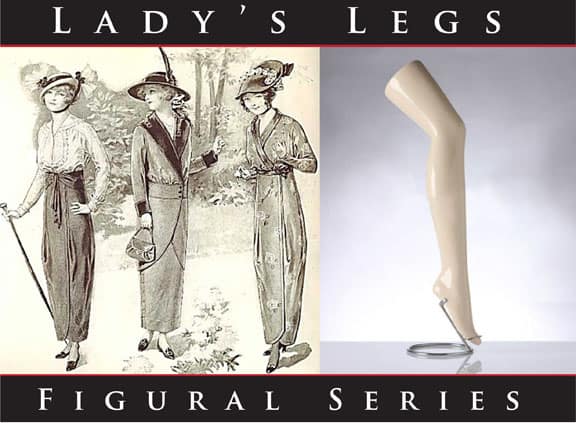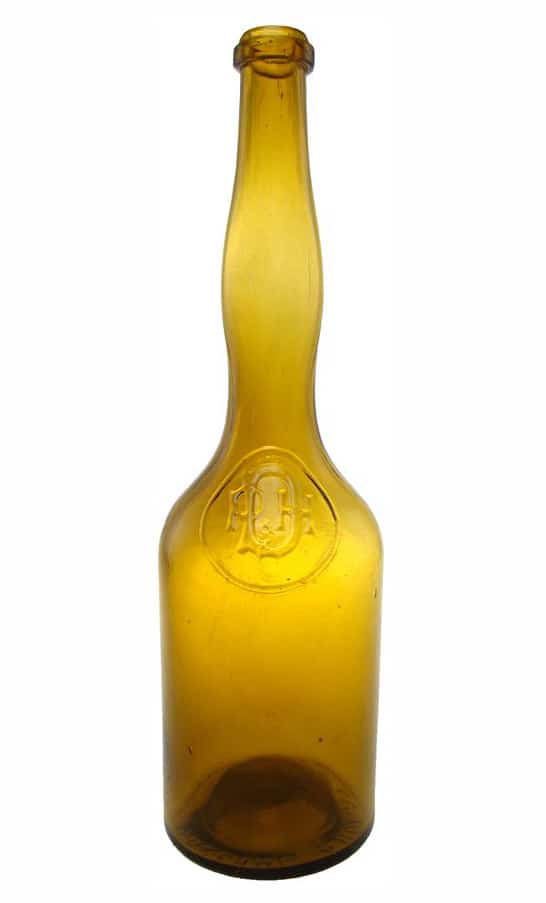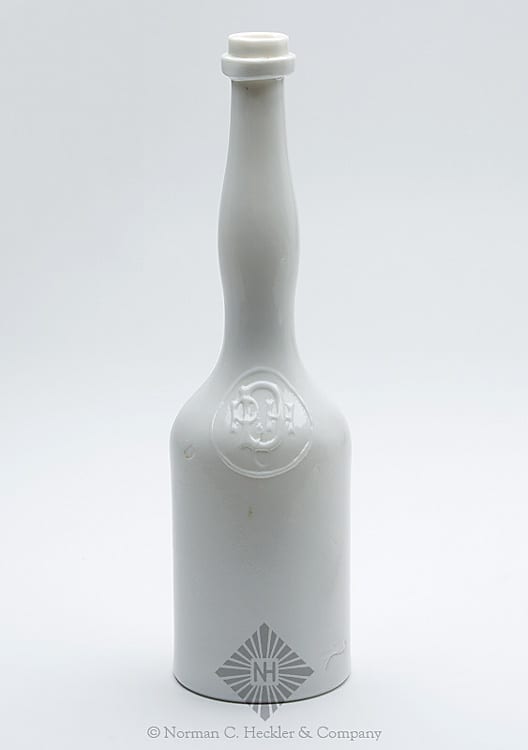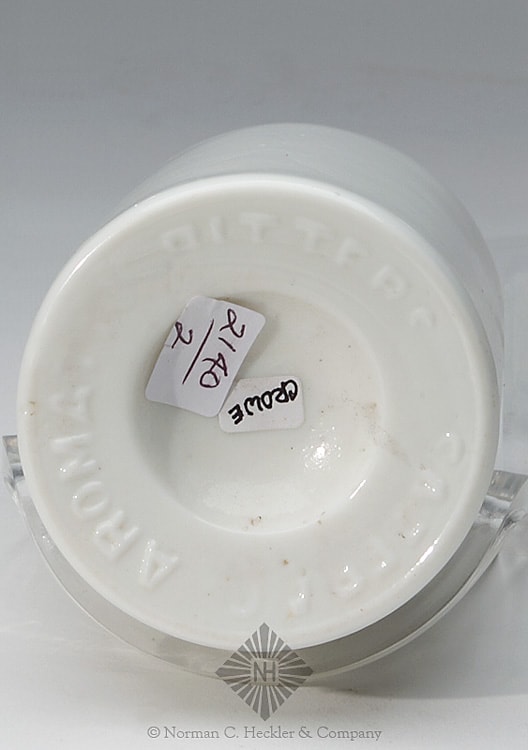Image may be NSFW.
Clik here to view.
Sazerac Aromatic Bitters Lady’s Leg
P.H. Drake & Co.
07 November 2018
Image may be NSFW.
Clik here to view.
Image may be NSFW.
Clik here to view.![]() Looking at the motif of the monogram “PHD & Co.” on a Sazerac Aromatic Bitters bottle leads you to Patrick Henry Drake, the proprietor for the famous Drake’s Plantation Bitters. You can see the link with the product name and Drake below with the monogram in the advertisement from Bitters Bottles.
Looking at the motif of the monogram “PHD & Co.” on a Sazerac Aromatic Bitters bottle leads you to Patrick Henry Drake, the proprietor for the famous Drake’s Plantation Bitters. You can see the link with the product name and Drake below with the monogram in the advertisement from Bitters Bottles.
The bottles are called a figural lady’s leg due to the sensual shape of the bottle neck. Three great examples are pictured at the top of this post from the great Bill Taylor figural bitters collection out in Oregon. The cobalt blue example is unique. Bill is known for his extensive collection of lady’s legs bitters.
Image may be NSFW.
Clik here to view.
The Carlyn Ring and W.C. Ham listing in Bitters Bottles is as follows:
Image may be NSFW.
Clik here to view.
S 47 Sazerac Aromatic Bitters
// b // SAZERAC AROMATIC BITTERS // s // motif monogram PHD & Co.
12 1/2 x 3 3/8 (5)
Round lady’s leg, ARM, Applied mouth, Milk glass – Common; Amber – Very rare;
Cobalt – Extremely rare
Note: Sewell T. Taylor, in the 1830s, imported Sazerac Brandy from Messrs. Sazerac de Forge et Fils, Limoges, France. In 1865, Tom H. Handy invented Sazerac Bitters from a secret formula based on boiled herbs. It is believed that this was a flavoring bitters originating in New Orleans.
Almanac: Morning Noon & Night, 1870-1871
Advertisement: 1872 Thomas H. Handy & Co. successors to John G. Schiller, Importers of Sazerac Brandy, Wine and Liquors, 14 and 16 Royal Street, and 11 and 13 Exchange Place, New Orleans. Advertisement 1881 Thos. H. Hardy, importing agent, Sazerac brandies, fine wines and liquors. Imported and domestic cigars. Nos. 9 and 11 St. Charles Street. New Orleans Directory 1915. Handy was listed at 118 Royal Street.
If the PHD monogram stands for Patrick Henry Drake then this could be the Drake’s Sazerac Bitters, Thompson 117.
Image may be NSFW.
Clik here to view.
By most accounts, around 1850, Sewell T. Taylor sold his New Orleans bar, The Merchants Exchange Coffee House, to become an importer of spirits. He began to import a brand of cognac named Sazerac-de-Forge et Fils. Meanwhile, Aaron Bird assumed proprietorship of the Merchants Exchange and changed its name to Sazerac Coffee House.
Legend has it that Bird began serving the “Sazerac Cocktail”, made with Sazerac cognac imported by Taylor, and allegedly with bitters being made by the local apothecary, Antoine Amedie Peychaud.
The Sazerac Coffee House subsequently changed hands several times, when around 1870, Thomas Handy became its proprietor. It is around this time that the primary ingredient changed from cognac to rye whiskey, due to the phylloxera epidemic in Europe that devastated the vineyards of France.
The creation of the Sazerac has also been credited to Antoine Amédée Peychaud, a Creole apothecary who emigrated to New Orleans from the West Indies and set up shop in the French Quarter in the early 19th Century. He was known to dispense a proprietary mix of aromatic bitters from an old family recipe.
According to popular myth, he served his drink in the large end of an egg cup that was called a coquetier in French, and the Americanized mispronunciation resulted in the name cocktail. This belief was debunked when people discovered that the term “cocktail” as a type of drink first appeared in print at least as far back as 1803—and was defined in print in 1806 as, “a mixture of spirits of any kind, water, sugar and bitters, vulgarly called a bittered sling.”
Read: Peychaud’s Cocktail Bitters – L.E. Jung and his Gators
At some point, Patrick Henry Drake obtained the sole right to manufacture and sell Sazerac Aromatic Bitters. By this time he had split from Demas Barnes and formed P.H. Drake & Company in New York. Thought Drake commenced with his plantation bitters in 1860, he did not start marketing Sazerac Aromatic Bitters until January 1st, 1869.
Clik here to view.

Sazerac Aromatic Bitters in yellow amber with olive tone.
Clik here to view.

Sazerac Aromatic Bitters in white milk glass (see base picture below) – Heckler Auctions
Clik here to view.

Sazerac Aromatic Bitters in white milk glass (see bottle picture above) – Heckler Auctions
Clik here to view.

Lot: 129 Bitters or Whiskey Type Bottle, America, 1860-1880. Cylindrical form with lady’s leg neck, brilliant deep sapphire blue, applied mouth with ring – smooth base, ht. 12 1/4 inches; (light patchy interior haze, two pinpoint flakes on edge of mouth). Similar in form to R/H #S-47 Possibly a labeled Sazerac Aromatic Bitters, as the color, size and form are identical. Generally fine condition. – Norman C. Heckler | Auction #170
